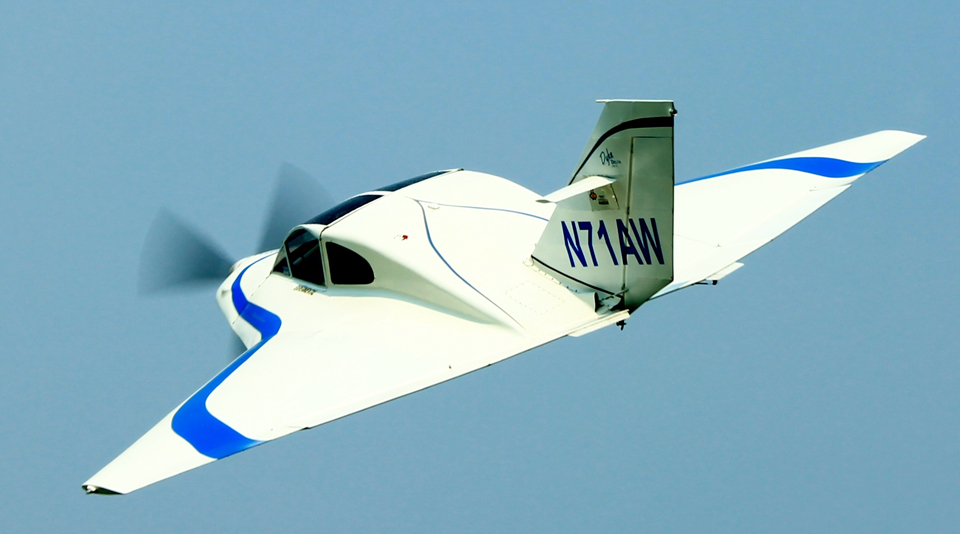The Rest of the Story: Dyke Delta N1AW
By Alan White
July 2016 - The Dyke Delta JD2 is the second aircraft designed by John W. Dyke of Fairborn, Ohio, a suburb of Dayton. John’s prototype first flew in 1962.
The design is steel tube primary structure with stainless steel ribs trussed with piper channel. The skin is fiberglass, laid up flat, and bonded to the stainless ribs with resin and resin-dipped flush pop rivets.
Wingspan of the folding wings is 22 feet 4 inches on my aircraft including the wingtip strobes. With the wings folded, the Delta can be towed on its main gear, and at 8 feet wide will fit in a standard garage.
Overall fuselage length is 20 feet and empty weight of 1AW is 1,141 pounds as currently equipped.
My power is a Lycoming O-360-F1A6, turning a 69-inch Whirlwind three-blade, constant-speed, carbon fiber prop, which has a total weight including spinner system and governor of 28 pounds.
I began construction in March of 1971 and only missed my target five-year build schedule by 34 years. The first flight took place on June 7, 2010. Total time to date is 329 hours.
Performance
Takeoff run is 800 feet and the initial rate of climb at gross weight of 2,000 pounds is 1,200 fpm in the summer, and 1,400-1,800 fpm in the winter and depending on load, all at 115 knots indicated.
Seating is one pilot in the front and three passengers on the rear bench seat with allowable rear seat total weight of 386 pounds with full 43-gallon fuel load in a single tank aft of the cabin in the turtleback.
The Delta features mechanically retractable gear, and 1AW is equipped with main gear doors. This yields a true airspeed (TAS) at 8,500 feet elevation of 166 knots (191 mph).
In the pattern, the gear can be extended at 120 knots, and pattern speed is 85 knots. Landing speed on final is 60 knots indicated.
The Delta is the most stable airplane I have flown in both pitch and yaw with rock-solid recovery from upset without oscillation, and roll stability is neutral.
I made my own first flight, after flying my Luscombe 8C for nearly 1,000 hours.
Handling and control harmony is very similar to the Luscombe, and the only difference I found on the initial flight was that I was over-controlling on rudder.
Overall the airplane is very easy to fly, and makes a great cross-country mount.
I have given about 250 Young Eagles rides in 1AW, and the kids have often referred to it as "the spaceship."







